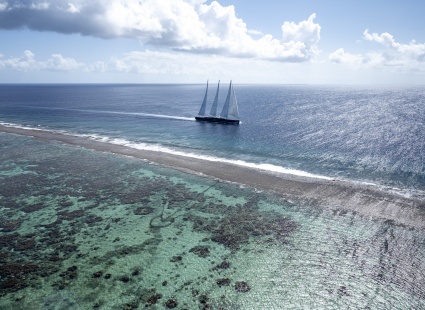THE SEA EAGLE SOARS
Royal Huisman releases an update, with stunning new images of the contemporary flybridge schooner, SEA EAGLE II (nowadays SEA EAGLE). A true sailing yacht, this 81m / 266ft beauty immediately earned her place alongside the shipyard’s Athena in the elite club of the world’s 10 largest sailing yachts.
Delivered in 2020 under the shadow of the pandemic, SEA EAGLE II’s arrival on the superyacht scene was inevitably low-key. Today, following her extensive world exploration, and with over 45,000 nm under her keel, Royal Huisman is pleased to set matters right and place this magnificent schooner in the spotlight she deserves.
Designed by Dykstra Naval Architects and Mark Whiteley Design, SEA EAGLE II has dramatic and purposeful contemporary lines with a plumb bow. Her very long waterline and powerful Panamax rig ensure effortless, mile-eating performance. On her sail trials, she comfortably recorded 21.5 knots in a moderate breeze. Despite her massive sail area (2,580 sq m / 27,770 sq ft upwind; 3552 sq m / 38,233 sq ft downwind), all three mainsails can easily be hoisted at once – taking no more time than required for a sloop of half this size. The efficiency of this sail management system understates the technical challenges behind it. Exceptional cooperation of an ‘A Team’ of Dykstra, Rondal, Carbo-Link and Doyle Sails made everything possible.
SEA EAGLE II is currently Royal Huisman’s largest yacht. Project 410, the 85m / 280ft sloop, will take over this title on delivery. Nearly 60 years of aluminum yacht-building experience have provided the shipyard with a level of expertise in constructing hulls of this material that few shipyards can match. This is especially true for sailing yachts of this size. The advantages are equally large: lightness, acceleration, strength and fuel-efficiency being just a few characteristics of a true sailing yacht versus a heavy, sail-assisted motor yacht.
Designed by Dykstra Naval Architects and Mark Whiteley Design, SEA EAGLE II has dramatic and purposeful contemporary lines with a plumb bow. Her very long waterline and powerful Panamax rig ensure effortless, mile-eating performance. On her sail trials, she comfortably recorded 21.5 knots in a moderate breeze. Despite her massive sail area (2,580 sq m / 27,770 sq ft upwind; 3552 sq m / 38,233 sq ft downwind), all three mainsails can easily be hoisted at once – taking no more time than required for a sloop of half this size. The efficiency of this sail management system understates the technical challenges behind it. Exceptional cooperation of an ‘A Team’ of Dykstra, Rondal, Carbo-Link and Doyle Sails made everything possible.
A true sailor’s yacht –
practical, powerful, safe and easily managed
Super-sized sailing yachts like this are no longer an impossible dream, Royal Huisman’s CEO Jan Timmerman points out: “Continual innovation, accumulated expertise and rigorous self-challenge have come together through our highly skilled and dedicated team to produce Athena, SEA EAGLE II and, currently in-build, the world’s largest sloop, the 85 m / 280 ft New World Sloop aka Project 410. Other breath-taking concepts, APEX 850 and WING100, are also generating considerable interest worldwide. Each example just awaits a visionary individual who will desire the opportunity to transform a revolutionary, true sailing yacht into reality. The next Royal Huisman super-sized sailing yacht would be welcomed into the ranks of the world’s top 10. She will join the existing Royal Huisman-built, thoroughbred ‘super-sized sailing yachts’, and – with our continuous increase of expertise – she would be our finest yet.”
Learn more? Full press release with background information and many more photos: link
Super-sized sailing yachts by Royal Huisman: an attractive (and possibly even better) alternative to motor yachts
In general, the comfort of motor yachts is enjoyed by their owners while “on location” – in a pretty marina or at an idyllic anchorage. Sailing yachts provide the same enjoyment, but are also much (more) fun while… Read on: link
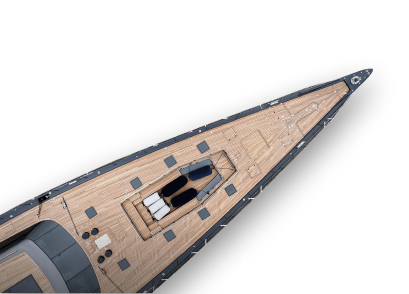
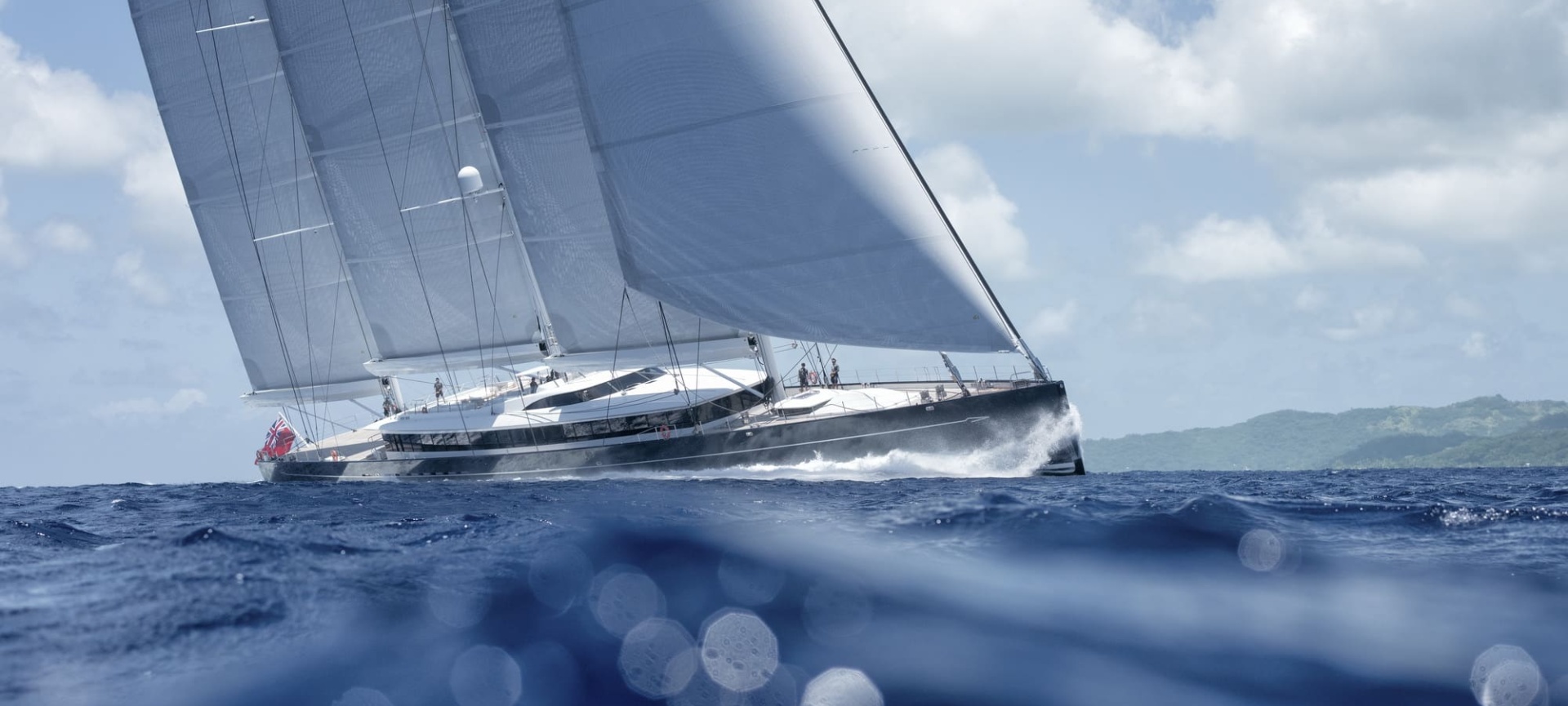
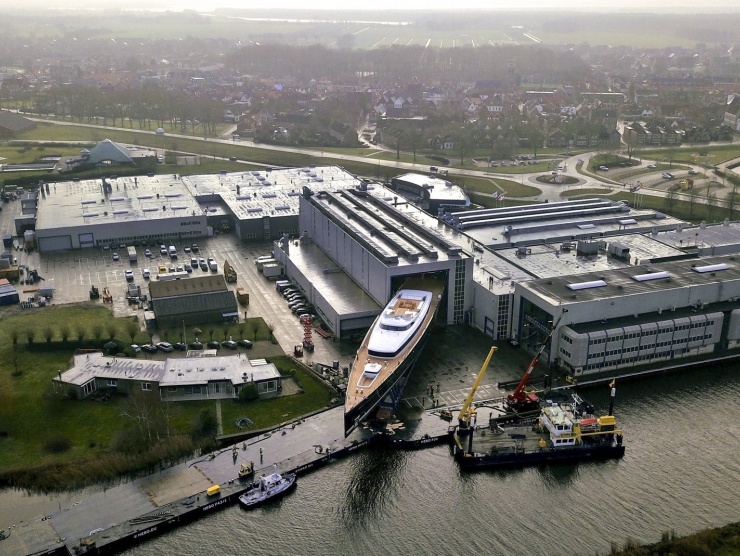
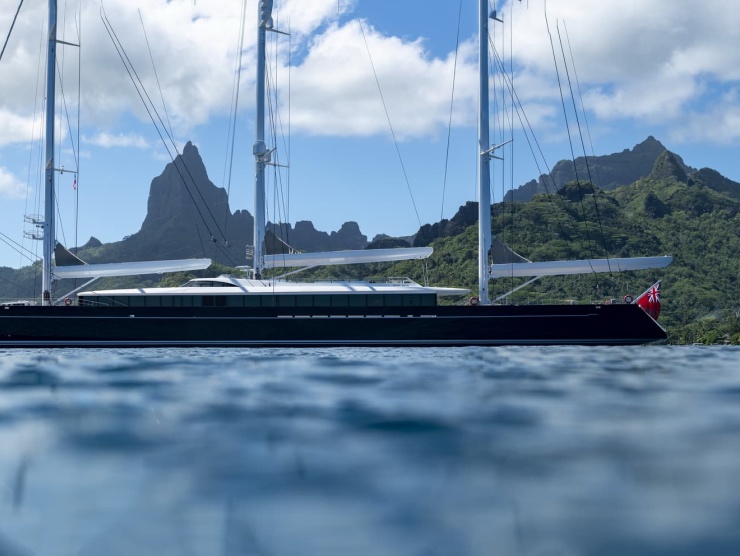
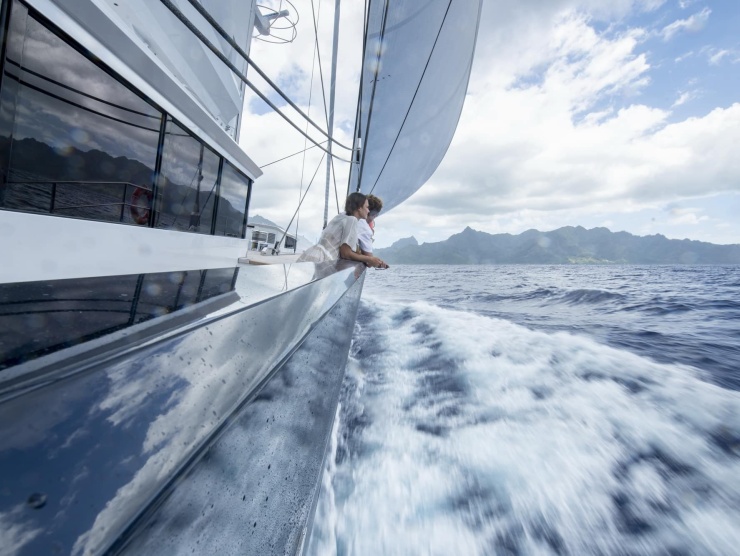
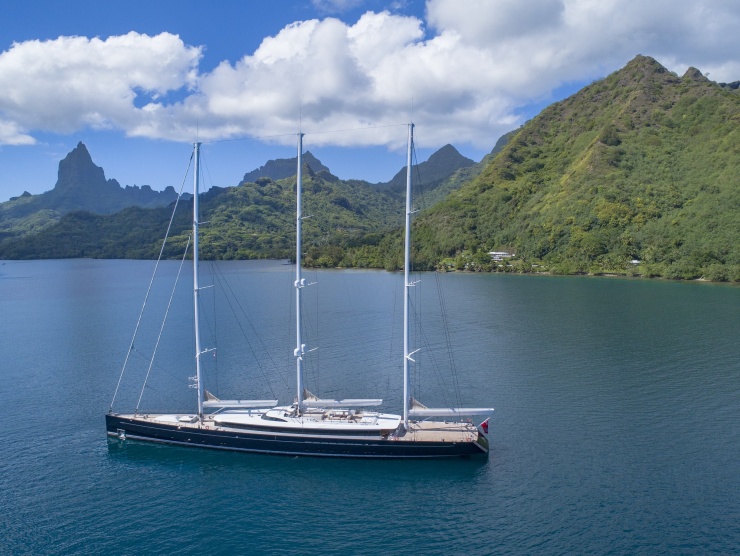

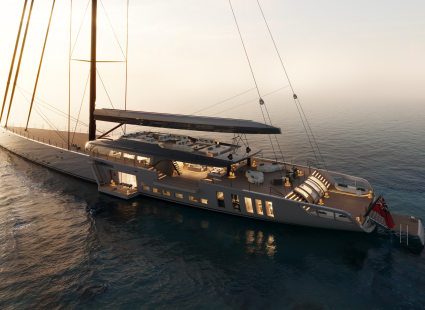
guillaume-plisson-0089-t9a0089-resize.jpg?resolution=425x310&quality=95)
